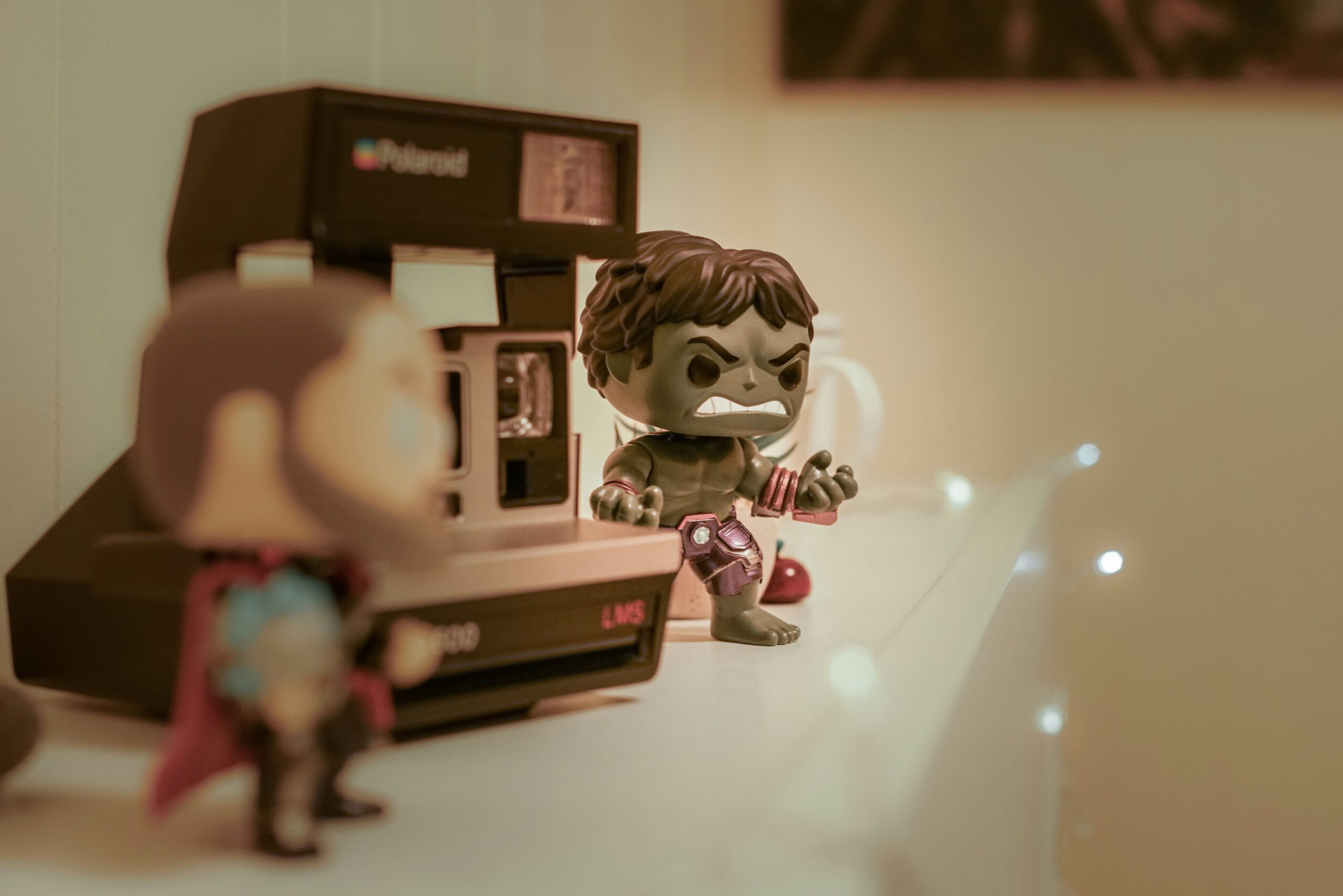Sorry Gavin, Your Lawsuit is Doomed Even Under the Work-For-Hire Doctrine
In the HBO show “Silicon Valley,” the antagonist CEO of a fictional company is suing the shows protagonist under the work-for-hire doctrine. Richard, the young software developer is on the verge of changing the technology industry—and making loads of cash—with a brand new, super-awesome compression algorithm. Essentially, his product will make really, really big files really, really, small. Richard, the developer, previously worked for Hooli (a Google-like company) and its CEO, Gavin Belson, before leaving, after his compression algorithm, Pied Piper, took off. It’s not the first time Hollywood has used law and order to create tension for a good-old-fashioned courtroom drama. But let’s take a look at what the work-for-hire doctrine is and if it is being used correctly.
You can find a more detailed description of the show here: http://en.wikipedia.org/wiki/Silicon_Valley_(TV_series)
In last week’s episode, Belson, who had already initiated a lawsuit claiming to own the intellectual property rights to Pied Piper, raised the stakes. Originally, Belson brought the suit to scare off investors who may have been interested in Pied Piper (Belson is working on his own compression by reverse engineering Richard’s—more on that below) but ran into the issue of having zero evidence to support his claim. In fact, Belson would have most likely lost on summary judgment. But this past Sunday, Belson and his lawyers latched onto a new strategy aimed at tricking a jury into siding with Hooli. Big Head, Richard’s childhood friend and co-worker at Hooli while Richard was developing Pied Piper, remained at Hooli after Richard denied him stock options in Pied Piper and Belson gave him a huge raise to spite Richard. Belson’s current plan? Promote Big Head several times and make him look like a code-writing rock star, the type that may have actually been the brains behind Pied Piper.
Belson’s attempt to “trick” a jury into making attenuated inferences is only further proof that his lawsuit is bologna. This very real legal analysis of a very fake legal controversy aims to prove that.
Copyrights
In order to claim a copyright, one must show that they authored an original, “fixed” work. This can be broken down into three essential elements: authorship, originality, and fixation. Of course, this is simplistic, but for our purposes will work just fine.
Federal copyright law in the United States is embodied in a statute, Title 17 of the US Code. The statute lists types of “works of authorship” that can be copyrighted. Computer software has generally been accepted by courts as falling under the “literary works” category.[1] If the computer code is original and fixed, boom, copyright protection.
One small caveat: copyright law does not extend to “ideas” or “methods, systems, or operations.” Thus Richard cannot claim a copyright in the idea of a compression algorithm. Similarly he most likely could not copyright the functionality of Pied Piper. In Lotus Development v Borland International, the U.S. Supreme Court held that graphic menu options, pull down tabs, and customizable key-strokes were non-copyrightable “methods of operation.” What this means is that in his race to develop a user-friendly compression before Richard, Belson can create an identical piece of software that functions in the exact same way as Pied Piper, and as long as he does not copy any code directly, he should be in the clear.
Even the fact that he broke down Pied Piper and reverse engineered it in order to develop his own compression may be perfectly fine—again, simplifying here. In Sega v Accolade and Sony v Connective, the Ninth Circuit allowed the defendants to reverse engineer video game systems under a fair-use analysis that sought to enhance competition in the market place. Though Belson’s compression would compete directly with Pied Piper to a much higher degree than the products in those two cases, without directly copying Richard’s code, Belson should avoid liability.
Works for Hire
But Belson’s lawsuit is really about ownership, not infringement;[2] he is claiming that because Richard developed Pied Piper while working as a developer at Hooli (work for hire), Richard does not own the copyright to Pied Piper, Hooli does. Copyright law features a work-for-hire doctrine that gives the ownership rights of a copyright to someone other than the author in certain situations. Generally, this means an employer gets the IP rights to its employee’s on-the-job creations.
In Community for Creative Non-Violence v Reid, the U.S. Supreme Court articulated what is the modern work-for-hire doctrine and scope-of-employment test. This test features many factors for a court to consider when deciding whether or not an employee created a work of authorship within the scope of his or her employment, which would then give the employer ownership of the work’s copyright. Courts will mainly ask: (1) Is the work the type typically performed by the employee? (2) Does it occur substantially within the authorized time and space limits of his or her job? (3) Is the work created, at least in part, to serve the employer? The court will also consider the nature of the employment, such as the amount of control the employer has over the employee, the employee’s skill set and salary/benefits, etc.
In Belson’s case, he will have a hard time proving Richard created Pied Piper for Hooli. For starters, it appears Richard did all of his Pied Piper work at his home, an incubator owned by his friend/co-owner of Pied Piper/roommate, Erlich. Richard did not spend his time at Hooli, nor did he use Hooli’s resources in order to create Pied Piper (as far as we know). In Roeslin v District of Columbia, Roeslin created a computer program completely independent of his office. He used his own money to take coding classes, buy materials, and spent hundreds of hours of his own free time to create the program. The court held that even though the program was to be used at his job, the circumstances of the case (combined with the fact that his boss explicitly told him not to work on it in the office) led to Roeslin owning the copyright. Richard can make the same claims.
Belson will point out that in Roeslin, the employee was not a software engineer, he was an economic analyst/consultant. Therefore, creating a computer program was not in his job description. Richard, on the other hand, was employed to write computer code, giving Belson a much stronger argument. Also, Richard shared his compression with co-workers at Hooli who then tested the program on Hooli computers during working hours (which led to the access needed to reverse engineer it).[3]
Unfortunately (fortunately, actually), too many facts weigh against Belson for him to win. When he learned of Pied Piper, he offered Richard $600K to buy it, then $3 million, then $4 million, and finally $10 million. That does not look like someone who is sure he already owns it. Further, all of Pied Piper’s development took place at Erlich’ incubator, using Erlich’s equipment. Finally, the norm in Silicon Valley appears to be that every employee for a tech company uses their free time to try and hit it big with a successful application; at least that is how the show paints it.
In the end, Belson will have a hard time staking claim to any copyright interest in Pied Piper. . .
Joint Authorship
. . . which is why Belson’s new move is to focus on Big Head. Belson hopes that by promoting Big Head—who still works, and always has worked, for Hooli—Big Head will look like a genius and a jury will think he was the brains behind Pied Piper from the get go. It will then seem as if Big Head, with Richard’s help, created Pied Piper while at Hooli. Bravo Belson, bravo.
Additionally, copyright law allows for joint authorship of works, so if Big Head authored Pied Piper, even jointly, Belson thinks he can claim ownership of at least Big Head’s piece of Pied Piper. Joint authorship requires simultaneous, independently original and copyrightable contributions from each joint author. If the work is not done simultaneously, the second work is derivative; if one of the contributors does not create anything that could stand alone as its own copyrighted work, he or she cannot then claim joint authorship of the whole, “joint” work.
Again, Belson is most likely out of luck. The same work for hire analysis would apply to Big Head as applied to Richard. And again, Belson will most likely lose that argument. Moreover, the show went to great lengths to show that Big Head had no involvement in creating Pied Piper. In fact, even though he was Richard’s oldest friend, he was offered ZERO shares in the company because he was quote “useless” to the team. His incompetence was further illustrated by his inability to explain to his Hooli co-workers how the algorithm functioned as they attempted to reverse engineer it. This all leads to the conclusion that Big Head was not a joint author, and Belson’s ploy is as doomed as it is desperate.
[1] You know how you spend an hour or so before bed every night reading through computer code? Yeah, me too.
[2] Actually, it’s really about scaring off investors and hamstringing Pied Piper’s finances. Gavin Belson: making the world a better place.
[3] Roeslin also tested his program at work, and he ended up winning his lawsuit.




